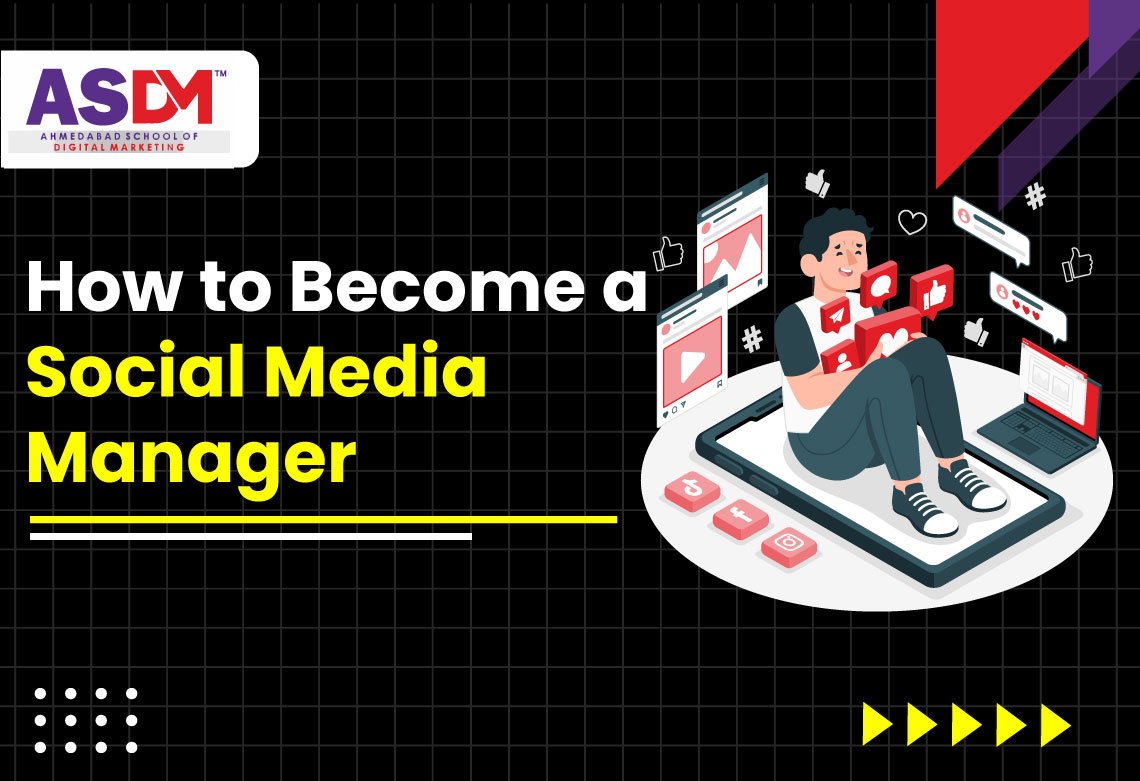From Novice to Expert: Your Complete Guide to Social Media Management


Understanding Social Media Management
Definition of Social Media Management
Social media management refers to the process of creating, scheduling, analyzing, and engaging with content across social media platforms. Think of it as the digital face of a brand—where every post reflects its mission and values. Effective social media management entails careful planning and consistent communication, ensuring that the voice of the brand resonates with the audience.
Importance of Effective Social Media Management
Effective social media management is vital for any organization looking to build a strong online presence. Here are a few reasons why:
- Brand Awareness: Regular posting keeps your brand top-of-mind for your audience.
- Customer Engagement: It fosters communication and builds relationships with followers.
- Competitive Advantage: A well-managed social media strategy sets you apart from competitors.
- Insights and Analytics: Understanding audience behavior through data helps in refining strategies.
Additionally, companies that prioritize social media management often see increased traffic and leads. For example, a small local bakery that engages with customers on Instagram has the potential to grow its following rapidly, simply by showcasing delicious pastries and responding to customer inquiries. This kind of engagement can lead to increased foot traffic and sales, proving just how critical effective management is in today’s digital landscape.

Getting Started with Social Media Management
Creating a Social Media Strategy
To embark on an effective social media journey, it’s crucial to start with a solid strategy. This plan should outline your target audience, messaging, and content types. Think of it as a roadmap guiding your brand’s direction online. Here’s how to approach it:
- Identify Your Audience: Who are they? What do they like?
- Research Competitors: See what works for them and what doesn’t.
- Define Your Brand Voice: Will you be professional, casual, or quirky?
Choosing the Right Social Media Platforms
Once your strategy is in place, the next step is selecting the right platforms to amplify your message. Not all platforms are equal, and where you should be depends on your target demographic.
- Facebook: Great for broad audiences and community engagement.
- Instagram: Perfect for visuals, appealing to younger audiences.
- LinkedIn: Ideal for B2B connections and professional networking.
For instance, a fitness brand might thrive on Instagram with engaging workout videos, while a consulting agency might find more success on LinkedIn by sharing informative articles.
Setting Goals and Objectives
With your platforms chosen, it’s time to establish clear goals. What do you want to achieve? Common objectives include:
- Increasing Brand Awareness: Growing your follower count.
- Driving Website Traffic: Directing users to your site.
- Boosting Engagement: Encouraging likes, shares, and comments.
Setting SMART objectives (Specific, Measurable, Achievable, Relevant, Time-bound) will provide clarity and keep you focused on what truly matters. For example, aiming for a 20% increase in engagement over three months can motivate teams to create compelling content. By laying this groundwork, businesses are better prepared to dive into the dynamic world of social media management.

Content Creation and Curation
Developing Engaging Content
With a strategy and goals set, the next step in effective social media management is content creation. Developing engaging content is key to capturing your audience’s attention. It should be fresh, relevant, and authentic. Here are some tips to make your content stand out:
- Use Eye-Catching Visuals: Incorporate images, videos, or infographics.
- Tell Stories: Share anecdotes or case studies that resonate with your audience.
- Incorporate User-Generated Content: Highlighting your fans not only engages but also builds community.
For example, a local coffee shop might share a customer’s story about how they started their business while enjoying a cup of joe. Such narratives not only connect emotionally but also promote customer loyalty.
Curating Relevant Content
In addition to creating original content, curating relevant content plays a significant role in enriching your social media feed. Sharing insights from thought leaders or industry news can position your brand as a resourceful authority. Here’s how to effectively curate content:
- Follow Industry Influencers: Keep an eye on their posts.
- Use Content Aggregators: Tools like Feedly can help gather valuable insights.
- Always Credit Sources: Give proper attribution to the original creators.
Imagine a health and wellness brand sharing articles from elite trainers or nutritionists. This not only adds value to followers but also increases engagement as users trust brands that share reputable information.
Scheduling Posts
Lastly, proper scheduling of posts is essential to ensure consistency and maximize reach. Consistency keeps your audience engaged, and scheduling allows you to maintain a steady stream of content without overwhelming yourselves. Consider these tips:
- Use Scheduling Tools: Platforms like Hootsuite or Buffer can streamline your posting process.
- Determine Optimal Posting Times: Analyze when your audience is most active.
- Plan for Peak Engagement Days: For instance, weekends might yield higher engagement for certain brands.
For example, a fashion brand could schedule its posts during lunch hours or in the evening, when users are more likely to browse social media. By effectively creating, curating, and scheduling content, brands can create a dynamic online presence that nurtures community and drives engagement.

Engaging with Your Audience
Building Strong Relationships
After establishing an engaging content strategy, it’s crucial to focus on building strong relationships with your audience. Effective engagement transforms followers into loyal fans. Here are some strategies to enhance those connections:
- Be Authentic: Share behind-the-scenes glimpses of your brand. Personal stories help humanize your business.
- Show Appreciation: Recognize your audience and thank them for their support. Simple gestures like shoutouts can go a long way.
- Create Community: Encourage conversations by asking questions and inviting responses.
For instance, a small bakery might post a story about how they source local ingredients, inviting customers to share their favorite recipes using those ingredients. This type of interaction fosters a sense of belonging and community.
Responding to Comments and Messages
Promptly responding to comments and messages shows that you value your audience’s input. It creates a connection that can keep your audience coming back. Here are some tips for effective responses:
- Acknowledge All Comments: Whether positive or negative, every comment deserves a response.
- Personalize Your Replies: Use the commenter’s name and reference their comment to make interactions feel genuine.
- Address Issues Publicly: If a customer has a complaint, respond publicly but move the discussion to a private message for resolution.
For instance, if a follower shares a negative experience, a thoughtful and swift response can turn that moment into an opportunity for improvement and loyalty.
Encouraging User Engagement
Lastly, actively encouraging user engagement is essential for maintaining an interactive community. Generating conversations keeps your audience involved and invested in your brand. Consider these strategies:
- Run Contests or Giveaways: Incentives can motivate followers to engage.
- Use Polls and Questions: Interactive content, like polls in stories, invites reactions.
- Encourage User-Generated Content: Create hashtags or challenges for followers to participate in.
A cosmetics brand could run a “before and after” photo contest, encouraging users to share their transformations using the brand’s products. Not only does this foster engagement, but it also provides authentic testimonials. By effectively engaging with your audience through relationship-building, thoughtful responses, and interactive content, brands can create a loyal community that supports their mission.

Analyzing and Improving Performance
Tracking Key Metrics
To ensure your social media efforts yield positive outcomes, it’s essential to analyze and improve performance continually. This begins with tracking key metrics that reflect the effectiveness of your content and engagement strategies. Here’s what to focus on:
- Reach and Impressions: Understand how many people see your posts.
- Engagement Rate: Measure likes, shares, and comments to gauge audience interaction.
- Click-Through Rate (CTR): Evaluate how many users click on your links.
For example, a travel agency may notice that posts highlighting unique destinations receive more shares than general travel tips. This insight allows them to pivot their content strategy accordingly.
Analyzing Data and Insights
Once key metrics are tracked, analyzing the gathered data provides valuable insights into your audience’s behavior. Use analytics tools provided by social platforms or external software to dive deeper. Consider the following:
- Identify Trends: Look for patterns in posts that performed well.
- Demographic Insights: Understand the age, gender, and location of your audience to tailor content.
- Content Type Performance: Determine which types of content (videos, images, blogs) resonate most with your audience.
For instance, a fitness brand might analyze their engagement metrics to find that video tutorials generate significantly higher interaction rates compared to static posts. This can guide future content planning.
Optimizing Strategies Based on Results
Lastly, it’s crucial to optimize your strategies based on the results from your data analysis. Continuous improvement is the key to staying relevant and effective in the fast-paced world of social media. Here are actionable steps to consider:
- Refine Content: Double down on formats that garner higher engagement, while phasing out less effective ones.
- Adjust Posting Times: Experiment with different times to post based on audience activity data.
- Iterate on Engagement Tactics: If a specific call-to-action drives more responses, use it as a template for future posts.
For example, if a clothing brand finds that using polls in Instagram stories significantly boosts engagement, they should make this a regular feature. By systematically tracking metrics, analyzing insights, and optimizing strategies, businesses can ensure they are not just participating in social media, but thriving in it.

Social Media Advertising
Introduction to Paid Advertising
As you’ve effectively tracked and optimized your organic strategies, the next frontier for amplifying your reach is through social media advertising. Paid advertising lets you target specific audiences with precision, making your marketing efforts more efficient and measurable. Here are some key benefits:
- Increased Visibility: Your ads can reach users who may not be familiar with your brand.
- Enhanced Targeting Options: Platforms allow you to tailor audiences based on demographics, interests, and behaviors.
- Quick Results: Unlike organic strategies, ads can drive traffic and conversions quickly.
For instance, a local gym running a Facebook ad can reach potential clients within their geographical region, showcasing a special offer on memberships. This targeted approach often results in higher engagement and conversion rates.
Creating Targeted Ad Campaigns
Once you grasp the fundamentals of paid advertising, creating targeted ad campaigns is your next step. The effectiveness of your ads hinges on how well you know your audience and how you craft your message. Aim for these essentials in your campaign:
- Define Your Audience: Use insights and analytics to identify and segment your audience.
- Craft Compelling Copy: Your messaging should highlight not just the product, but the value it brings.
- Utilize Attractive Visuals: Eye-catching images or videos are crucial in capturing attention.
For example, if a skincare brand wants to promote a new anti-aging cream, targeting young professionals interested in beauty might yield better results. A clear brand story coupled with attractive visuals can create an irresistible ad.
Monitoring Ad Performance
After launching your ad campaigns, continuous monitoring of their performance is vital for success. Tracking key metrics will allow you to optimize and refine your strategy in real-time. Here’s what to keep an eye on:
- Click-Through Rate (CTR): Measures how many people are clicking your ad versus how many see it.
- Conversion Rate: Indicates how many of those clicks lead to desired actions (purchases, sign-ups).
- Cost Per Acquisition (CPA): Understand how much you’re spending to acquire each customer.
For instance, if a local restaurant finds their ads are getting clicks but not conversions, they might reconsider their call-to-action or offer. By constantly monitoring performance and adjusting strategies, businesses can maximize their advertising investment and ensure they’re reaching the right audience effectively.

Managing Social Media Accounts Effectively
Organizing Content Calendar
As you dive deeper into social media advertising and track performance, managing your accounts effectively becomes essential for maintaining consistency and strategic alignment. One effective tool for this is a content calendar. By organizing your calendar, you can plan and visualize your content ahead of time. Here’s how to structure it:
- Plan Ahead: Schedule posts for the upcoming weeks or months.
- Align with Marketing Goals: Ensure your content supports any ongoing campaigns or promotions.
- Include Content Types: Note the types of posts, such as videos, blog shares, or polls.
For example, a non-profit organization might plan its posts around key awareness dates throughout the year, ensuring timely and relevant content that captures attention.
Collaborating with Team Members
Another vital aspect of effective management is collaboration among team members. Social media often involves varying roles, from content creators to analysts. Fostering teamwork can enhance creativity and productivity. Here are some tips for effective collaboration:
- Define Roles Clearly: Ensure everyone knows their responsibilities.
- Use Collaborative Platforms: Tools like Trello or Asana can help streamline communication and project management.
- Foster Open Communication: Regular check-ins and brainstorming sessions can keep everyone aligned and motivated.
By regularly collaborating, a marketing team can tap into diverse ideas, leading to fresh campaigns and enhanced audience engagement. For instance, designers and copywriters can work closely to ensure visuals and messaging align seamlessly.
Utilizing Social Media Management Tools
Finally, leveraging social media management tools can transform the way you handle multiple accounts. These platforms can help streamline your processes, saving time and enhancing your efforts. Consider the following popular tools:
- Buffer: Great for scheduling and analyzing posts across different platforms.
- Hootsuite: Allows for monitoring interactions and performance from a single dashboard.
- Canva: An intuitive design tool for creating visually engaging posts.
For example, using Buffer, a retail brand can schedule promotional posts ahead of a holiday sale, ensuring they reach their audience at the optimal times. By organizing your content calendar, collaborating effectively with team members, and utilizing management tools, brands can enhance their social media presence and operate more efficiently. This structured approach leads to better engagement and ultimately drives results.

Handling Challenges and Crisis Management
Dealing with Negative Feedback
As brands navigate the vast landscape of social media, they often encounter challenges, particularly in handling negative feedback. How you respond to criticism can significantly impact your brand’s reputation. Here’s how to effectively deal with negative feedback:
- Acknowledge the Issue: Always start by recognizing the customer’s concerns. Ignoring the problem can escalate negativity.
- Respond Promptly: A quick response shows you value your audience’s opinions and are committed to resolution.
- Keep It Professional: No matter how personal the feedback feels, maintain a respectful tone.
For example, if a customer publicly complains about a delayed order, responding quickly and offering a solution can turn a negative experience into a positive one, enhancing brand loyalty.
Managing Social Media Crisis
In addition to negative feedback, brands may face larger-scale crises that threaten their reputation or operations. Managing a social media crisis requires a calm and strategic approach. Here are steps to handle such situations effectively:
- Identify the Crisis Early: Monitor social media channels for any signs of escalating issues.
- Communicate Transparently: Make sure to address the issue honestly with your audience.
- Limit Reaction Time: Quick action can prevent a situation from worsening.
For instance, if a food company faces a recall due to safety concerns, an immediate and transparent response outlining the steps taken ensures that customers feel informed and valued.
Developing a Crisis Response Plan
To prepare for potential crises, developing a crisis response plan is essential. This proactive measure can save your brand valuable time and resources. Consider including the following in your plan:
- Define Roles: Clearly outline who is responsible for communication, monitoring, and problem resolution.
- Draft Templates: Create response templates for various scenarios to streamline the review process.
- Evaluate and Adapt: After a crisis, review your response to understand what worked and what didn’t, adapting strategies accordingly.
For example, a tech company might have a crisis response plan in place that designates team members to monitor social media and craft appropriate responses, reducing confusion and ensuring clarity during a high-stakes scenario. By effectively dealing with negative feedback, managing crises proactively, and having a solid response plan, brands can maintain trust and integrity in the eyes of their audience. This approach not only mitigates damage but can also foster a culture of transparency and accountability.

Staying Updated and Evolving Strategies
Keeping Up with Social Media Trends
In today’s fast-paced digital landscape, staying updated on social media trends is essential for effective management and audience engagement. Trends can shift rapidly, and being on the forefront allows brands to resonate with their audience. Here’s how to keep track of what’s hot:
- Follow Industry Leaders: Subscribe to insights from experts in your field. Use platforms like Twitter or LinkedIn to stay in the loop.
- Monitor Popular Hashtags: Tracking trending hashtags can reveal what topics are currently engaging users.
- Engage with Your Audience: Their interests and conversations can give you direct insights into emerging trends.
For example, a fashion brand might notice that ’sustainable fashion’ is gaining traction on platforms like Instagram, prompting them to incorporate this angle into their campaigns.
Experimenting with New Strategies
To remain competitive, brands should not only follow trends but also be willing to experiment with new strategies. Testing varied approaches can lead to unexpected gains and fresh audience engagement. Here are a few strategies to consider:
- Try New Content Formats: From live videos to stories, experimenting with content types can attract different audiences.
- Engage in Collaborative Marketing: Partner with influencers or complementary brands for special campaigns.
- Seek Audience Feedback: Encourage followers to share what types of content they want to see more of.
For instance, an online education platform may pilot a series of Instagram Lives, inviting industry experts to discuss current topics. If the response is positive, they can make it a regular feature.
Adapting to Changes in Algorithms
Lastly, adapting to changes in social media algorithms is crucial for ensuring content reaches its intended audience. These algorithms dictate how and when posts are displayed, so understanding their dynamics helps brands maximize visibility. Consider the following steps:
- Stay Informed: Regularly check updates from social platforms regarding algorithm changes.
- Prioritize Engagement: Focus on content that sparks conversation, as algorithms often favor highly engaged posts.
- Test Posting Times: Experiment with different posting times to see when your audience is most active.
For example, if a news outlet learns that its posts featuring breaking news are receiving more interactions, it may decide to optimize their strategy to cover more trending topics. By keeping abreast of social media trends, experimenting with innovative strategies, and adapting to algorithm changes, brands can maintain an agile and effective online presence. This dynamism not only boosts engagement but also ensures they remain relevant in a continually evolving digital world.

Conclusion and Future Trends
Recap of Key Points
As we conclude our exploration of social media management, it’s crucial to revisit the key points we’ve discussed throughout this journey. From understanding the fundamentals of social media management to effectively engaging with your audience and adapting to evolving trends, each element plays a significant role in building a robust online presence. Here’s a quick recap:
- Define Your Strategy: Establish a clear social media strategy aligned with your business goals.
- Engage Effectively: Build strong relationships by responding to feedback and encouraging user engagement.
- Monitor Performance: Assess metrics and optimize content based on data.
- Stay Adaptive: Embrace new trends, experiment with strategies, and keep up with algorithm changes.
By synthesizing these insights, brands can create more meaningful interactions with their followers and foster long-term loyalty.
Future of Social Media Management
Looking ahead, the future of social media management promises exciting developments that brands should be prepared for. As technology evolves and consumer preferences shift, several trends are set to shape the landscape:
- Increased Personalization: Brands will need to tailor content even more specifically to individual audience segments.
- Rise of Virtual and Augmented Reality: Expect more immersive experiences via AR and VR to engage users in innovative ways.
- Greater Emphasis on Authenticity: With audiences craving genuine interactions, brands will need to showcase their human side.
- AI-Driven Insights: Artificial intelligence will continue to play a vital role in analyzing audience behavior and predicting trends, making data-driven decisions more streamlined.
For instance, a cosmetics company might leverage AR technology to let users “try on” products virtually through social media filters, creating a unique shopping experience. By keeping these future trends in mind, brands can remain agile and forward-thinking, positioning themselves for success in the continually evolving landscape of social media management. Embracing these changes will undoubtedly lead to deeper engagement and stronger connections with audiences, paving the way for a prosperous digital future.




